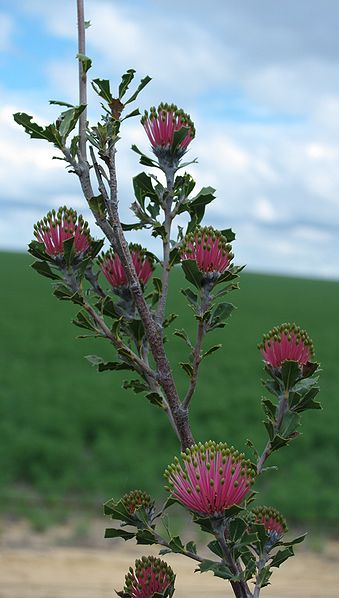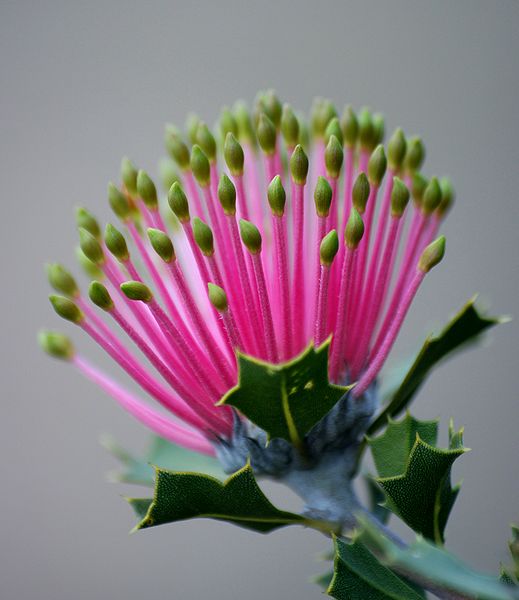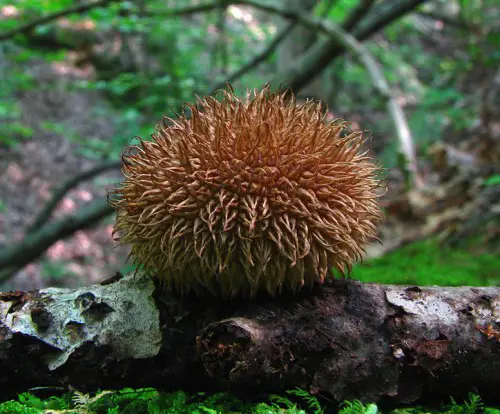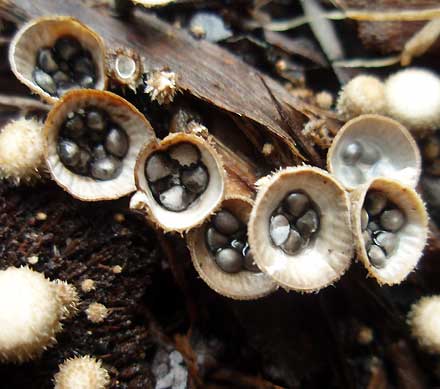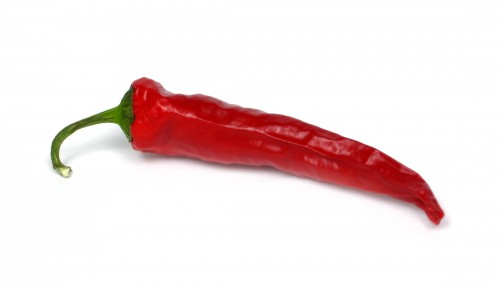Matchstick Banksia
Also known as the Quairading Banksia, the Matchstick Banksia is an endangered species that is endemic to south-west Western Australia. It is a subgenus of 3 related Banksia species that have dome-shaped inflorescences.
The Matchstick Banksia was first collected before 1880. However, it was not until 1981 that the Australian Botanist, Alex George, formally named and described the species. There are 2 genetically distinct population groups, however there are no varieties that are scientifically recognised.
Matchstick Banksias grow as either a small tree or a shrub. It can grow up to 5 metres high even without a lignotuber. It has 1 or more main trunks that have smooth grey bark and many branches. Young stems have coarse hairs, but these hairs are lost as the stems age. Leaves are wedge-shaped and have serrated edges. The leaves are between 1 – 4 cm long, and 0.5 – 1.5 cm wide. The upper surface of the leaf is a dull green, and both leaf surfaces are covered in coarse hairs when they are young but they are lost quickly.
As mentioned above, the inflorescences are different to most other banksias as they have dome-shaped heads. These inflorescences are about 3 – 4 cm in diameter, and grow a the end of branches. Each inflorescence has between 55 to 65 individual flowers. The flowers almost look like a matchstick, hence its name. When the flowers fall out of the cones, it will reveal a woody base that has up to 5 follicles. These follicles contain 2 seeds and are triangular in shape.
This endangered species occurs around the country towns of Pingelly and Quairading. It is only found in a 90 km range in this area. It prefers deep yellow sand at elevations at woodland habitats of 230 – 300 metres.
It is hard to propagate the Matchstick Banksia, despite the fact that its seeds to not require any treatment. It will take 23 days to germinate. Cuttings yield unpredictable results. This species does not have much appeal to the cut flower industry as it has prickly foliage and has a tendency to drip nectar. Although it has conservation status, Kingsley Dixon of the King Park and Botanical Gardens suggests that this plant may have weed potential. It was trialled as a cut flower crop north of the Moore River, and its seedlings were noted afterwards.
